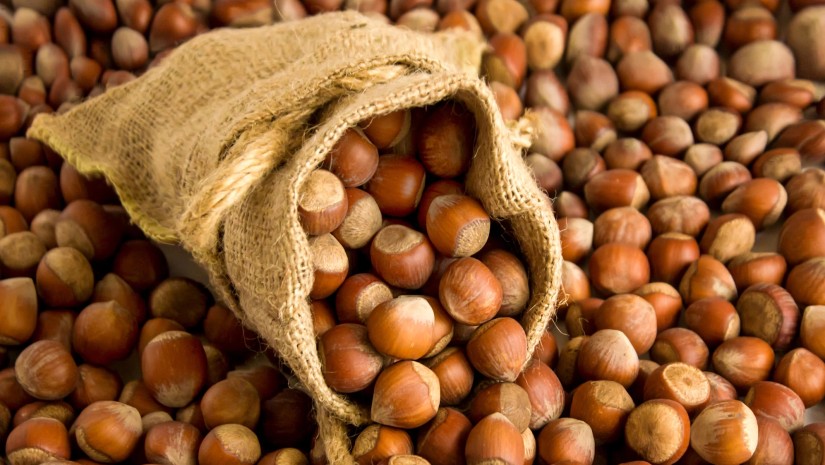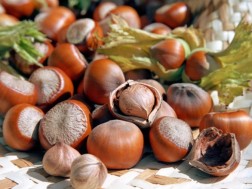PMC Research Centre published a report on Hazelnut Production Sector in Georgia.
According to the documnet, Hazelnut production in Georgia has been rising. From 2016 to 2022, hazelnut production in Georgia increased at an average annual rate of 7.1%. However, in 2017-2018, the Brown Marmorated Stink Bug (BMSB) invasion and tree fungus diseases hindered hazelnut production in Georgia. In 2022, the production faced setbacks yet again (-27.4%, y/y) due to unfavorable weather conditions.
Samegrelo remains the top hazelnut-producing region. In Georgia, Samegrelo stands out as the top hazelnut-producing region, backed by Ferrero Rocher’s utilization and investments in the region. Samegrelo is followed by Guria, Kakheti, Adjara, and Imereti. These five regions collectively account for 97.9% of Georgian hazelnut production.
In 2022, hazelnut production setback is evident in every region, except Kakheti. In 2022, Hazelnut production increased marginally in Kakheti, attributed to favourable weather conditions and higher share of industrial orchards. However, all other regions, including Samegrelo and Guria, experienced production setbacks.
Hazelnut prices vary across regions in Georgia. During the period 2020-22, the most expensive hazelnuts in Georgia were produced in Kakheti, followed by Samegrelo-Zemo Svaneti and Imereti. Some price differences across regions can be attributed to the proportion of industrial orchards in the region. Kakheti, in particular, stands out due to the majority of its orchards being industrial, producing premium-quality hazelnuts that are sold at higher prices.
Hazelnut prices in Georgia have been decreasing. In 2022, the price of hazelnuts followed a downward trend in every region, resulting in an 11.3% decrease y/y (measured in USD per kilogram). Decreasing prices negatively affect profitability of hazelnuts production in Georgia.
Georgia is one of the primary exporters of hazelnuts. In 2022, Georgia exported 22 thousand tonnes of hazelnuts, experiencing a moderate y/y decrease of 6.5%. Notably, Georgian hazelnut exports displayed a declining trend during 2016-2018, followed by a steady growth trajectory leading up to 2022, resulting in an average annual growth rate of 1.6% during 2016-2022.
The majority of the hazelnuts exported from Georgia are shelled, with in shell export shares on the rise. The proportion of shelled hazelnuts in the total Georgian hazelnut exports decreased to 73.7% in 2022 compared to 93.8% in 2016. In contrast, the share of in shell hazelnuts rose from 6.2% in 2016 to 26.3% in 2022, which can be attributed to the convenience of selling lower-quality in shell hazelnuts.
Georgia is struggling to match its 2016 peak in hazelnut export value. In 2022, Georgia exported hazelnuts worth $96.7 million, experiencing a substantial y/y decrease of 16.0 pp. Over the period of 2016 to 2022, the value of Georgian hazelnut exports reached its highest point in 2016, at $179.4 million. This was followed by a decline till 2019 and a moderate increase from 2019 to 2021, although still far from the levels achieved in 2016.
Shelled hazelnuts also dominate the Georgian hazelnut export value. In 2022, the share of shelled hazelnuts in the total hazelnut export value stood at 83.3%, although this proportion had decreased from 96.8% in 2016, indicating a growing share of in shell hazelnuts in the Georgian hazelnut export value.
Georgian hazelnuts are mostly exported to European markets. In 2022, 77.1% of Georgian hazelnuts were exported to EU countries, with 37.4% going to Italy, followed by Germany (20.8%) and Armenia (7.8%).
Germany is a top importer of Georgian shelled hazelnuts. In 2022, 27.4% of the shelled hazelnuts exported from Georgia were sent to Germany, known for having one of the highest hazelnut consumption rates and for its various hazelnut treats. Italy followed closely at 19.3%, with Armenia (9.8%) and Spain (6.1%) also being key importers.
Georgian in shell hazelnuts are primarily exported to Italy. The export volume of in shell hazelnuts is significantly lower than that of shelled hazelnuts, mainly due to higher transportation costs and the less reliable quality of in shell hazelnuts. In 2022, the majority of in shell hazelnuts were exported to Italy, with a significant share of 88.0%, attributed to Ferrero’s activities on the Georgian market.
The hazelnut export market requires diversification. Currently, Georgian hazelnut exports are primarily focused on Europe, occasionally resulting in setbacks due to low demand. To overcome this challenge, Georgia should consider entering the growing Asian market, acknowledging the region's potential and rising demand for hazelnuts.
The price of shelled hazelnuts exported from Georgia mainly follows global trends, while in shell hazelnuts do not. In 2016- 2022, the price of Georgian exports of shelled hazelnuts showed a strong correlation of 0.98 with the price of global exports of shelled hazelnuts. In contrast, the correlation between the prices of global and Georgian exports of in shell hazelnuts was very low, at 0.21.
Georgian hazelnut export prices have remained consistently below the global average. In 2016-2017, the average price of hazelnuts decreased due to reputational damage caused by product irregularities of certain exporters from Georgia. The relatively lower price of Georgian hazelnuts is also attributed to the impact of pest infestations, leading to quality losses in the crop, sometimes exacerbated by unfavorable weather conditions. Additionally, secondary-quality hazelnuts, used in hazelnut paste production, are labeled as shelled hazelnuts while exporting. This practice also contributes to lower average prices.
The price of in shell hazelnut exports is much higher than farm gate prices. In 2016-2022, hazelnut export prices were, on average, 1.8 times higher than prices at farm gates in Georgia emphasizing the considerable value added to hazelnuts during the export process. This difference can also be attributed to the lower quality of hazelnuts purchased at farm gates, making them less suitable for exports.
Significant foreign investments have been attracted to the hazelnuts sector in the country. Since 2007, the Italian confectionary company Ferrero, known for its trademark products such as Nutella and Ferrero Rocher, has been operating on the Georgian market through its subsidiary, AgriGeorgia. Ferrero made a direct investment in a farm located in Samegrelo, which is among the nine farms globally owned by Ferrero. Notably, AgriGeorgia is one of the biggest exporters of Georgian hazelnuts13, not only from Samegrelo, but all hazelnut-producing regions of Georgia, particularly, Kakheti.
The Government of Georgia supports hazelnut production. By September 2023, more than 90,000 farmers received subsidies, mostly in SamegreloZemo Svaneti and Guria, and the total amount of subsidies, by the same period, exceeded 20 million GEL15. According to sectoral associations, even though, subsidies increased the quantity of harvested hazelnuts by more than 20%, some farmers did not spend provided subsidies for intended purposes. Notably, the program is set to continue in 202416. Additionally, hazelnut producers can also benefit from another government program, the Preferential Agrocredit Project, which includes a specific subcomponent for financing hazelnut primary production. However, only 28 farmers have applied to this program.
Hazelnuts production is supported by donor organizations. Georgian Hazelnut Improvement Project18 (G-HIP) funded by USAID and Ferrero, aimed to improve the hazelnut value chain, and increase the quality of Georgian hazelnuts. As part of this initiative, 35,000 beneficiaries increased their production, and eight new storage and drying enterprises were built19, fully equipped with modern machinery. The program assisted farmers in obtaining Food Safety Certificates and addressing BMSB. The European Union also supported hazelnut production in Georgia through the “Ready to Trade” project which was implemented by the International Trade Centre. The beneficiaries received help with business plans, quality management, certification, and modernizing machinery. The project's key focus was enhancing market connections with EU buyers.
















